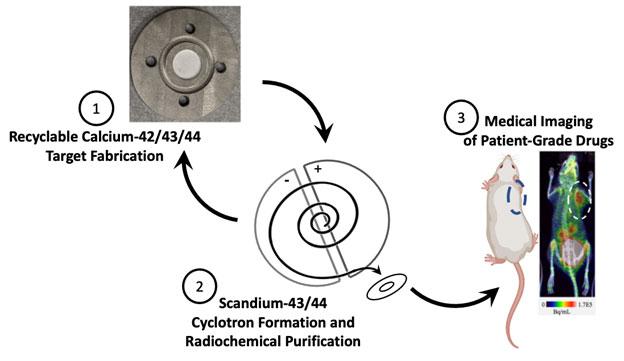Researchers Improve Production for Short-Lived Scandium Radioisotopes

Image courtesy of Jonathan Engle, University of Wisconsin. Summary of the production process for radioisotopes of scandium using recyclable, enriched calcium.
Scandium radioisotopes offer great potential for medical imaging applications. Currently, their use in cancer imaging remains limited due to challenges in producing sufficient amounts of high-purity isotopes suitable for human use.
Researchers at the University of Wisconsin, Madison studied five nuclear reactions that form scandium-43 and scandium-44 from proton and deuteron irradiation of calcium oxide accelerator targets. The experiments analyzed the quantities and purities of scandium-43 and scandium-44 made when starting with commercially available calcium enriched targets. The researchers also developed processes to chemically purify scandium and to recover the very expensive calcium target materials, which helps make them sustainable in a modern hospital environment.
The scandium-43 and scandium-44 radioisotopes produced are pure enough to use as radioactive drugs that target cancer. The DOE Isotope Program is supporting this and other research and development efforts on scandium radioisotope production at several facilities. The program’s goal is to make scandium radioisotopes routinely available in the near-term.




